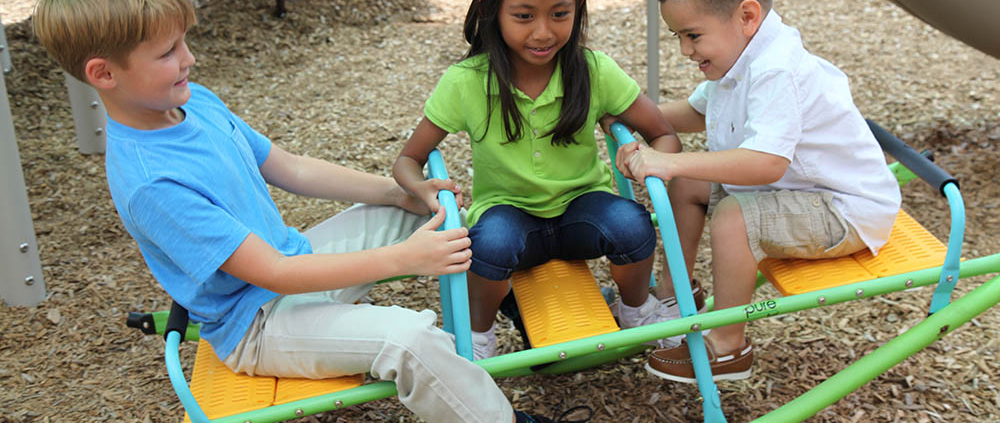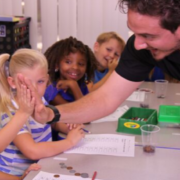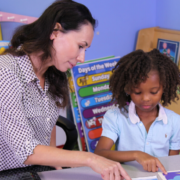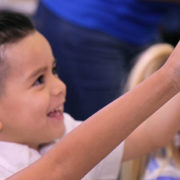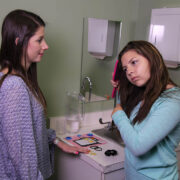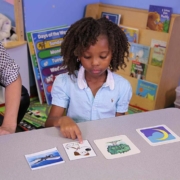5 Ways To Help Your Child With Autism Show Empathy
Empathy is a complex social skill involving verbal and non-verbal cues. For a person with Autism, this skill does not come naturally. These skills start to develop with typically developing children in their toddler years. Children with autism may need extra training and reinforcement to show empathetic behavior.
What is empathy and why is it important?
In an article by Wondra and Ellsworth, 2015, empathy is defined as “vicariously feeling what another person feels as a result of an event they have experienced”. Empathy is not only understanding how another person feels but sharing those feelings as well. The best way to tap in and feel what the other person is feeling is by our history. Have you ever dropped your cellphone on the floor, picked it up, and saw a huge crack across the screen? When you experience the same event as someone else, it is easier to share the same feelings and express empathy.
WHY is empathy important? Empathy is an important component of developing and keeping meaningful relationships. Imagine having a best friend that doesn’t ask if you’re ok when you express your horrible day at work. That friendship will more than likely come to an end very soon. Empathy is a social skill we can train and reinforce every day in our kids’ lives.
Below, you will read 5 ways to help your child with autism show empathy.
Attach empathy to behaviors
- Empathy cannot always be “seen” and this creates a problem for behavior analysts to be able to track data. Attaching specific behaviors to empathy is easier to train and track when teaching others. As a parent, ask yourself the following questions, “What do I want empathy to look like in my family?”, “How do I show empathy to my kids?”, “How do others show empathy to each other?”. Below are a few behaviors that I have attached to empathy and train my clients to show.
- A verbal statement such as, “Are you ok?”, “I’m sorry that happened”, “How can I help you?”
- Apply appropriate intonation
- Use appropriate facial expressions (not smiling when someone is hurt)
- Respond with appropriate gestures (hugging, patting back, etc.)
- Spontaneous behaviors; watch your child interact with others. If you see an appropriate empathetic behavior, reinforce it!
- Empathy cannot always be “seen” and this creates a problem for behavior analysts to be able to track data. Attaching specific behaviors to empathy is easier to train and track when teaching others. As a parent, ask yourself the following questions, “What do I want empathy to look like in my family?”, “How do I show empathy to my kids?”, “How do others show empathy to each other?”. Below are a few behaviors that I have attached to empathy and train my clients to show.
Positive Reinforcement
- Positive reinforcement is when a “behavior is followed immediately by the presentation of a stimulus that increases the future frequency of the behavior” (Cooper, Heron, & Heward, 2007). To sum it up, if you see your child engaging in appropriate empathetic behavior, provide reinforcement!
- Provide verbal praise, such as, “I love how you asked your friend if he’s ok, that’s very kind of you!”
- Give them a small portion of their favorite candy and/or snack
- Allow them to have extra playtime, screen time, etc.
- Positive reinforcement is when a “behavior is followed immediately by the presentation of a stimulus that increases the future frequency of the behavior” (Cooper, Heron, & Heward, 2007). To sum it up, if you see your child engaging in appropriate empathetic behavior, provide reinforcement!
Role-Play With Toys
- Using dolls or action figures, create a scenario where you model an empathetic response with their toys. Explain how the toy might be feeling and how the other toy can respond. You can refer to these scenarios when events happen in real life.
Modeling and Prompting
- Research shows that modeling behavior for children and prompting them to engage in the behavior has been the best tool for teaching empathy. If your child loses a toy or slips and falls, model the appropriate response by asking if they are ok, offering to help look for the toy, etc. There are many moments in the day that we can use to show empathy.
- Watch your child interact with other children or siblings. Prompt the appropriate response when an event happens.
- If something happens to you, explain to your child how you are feeling. Ask them to think back to a time when they might have felt the same way. Give them examples as well to guide their thinking.
- Always be on the lookout for opportunities to prompt an empathetic response! Social skills are not just while they’re at school or therapy. Social Skills are 24/7! As a parent or caregiver, you are the one that can have the most effective response when teaching these skills! Ask your child’s ABA therapist or teacher what social skills they’ve been taught so that you can expand on that training.
- Research shows that modeling behavior for children and prompting them to engage in the behavior has been the best tool for teaching empathy. If your child loses a toy or slips and falls, model the appropriate response by asking if they are ok, offering to help look for the toy, etc. There are many moments in the day that we can use to show empathy.
Contrive Situations with siblings/peers/parents and I-messages
- The more practice a child gets the better! Contrive situations where another person may need an empathetic response, then prompt your child through the correct response. They say practice makes perfect! Although this may not be completely true, it will help your child in gaining the skills needed to generalize as well.
- I- messages, these are great! It doesn’t get easier than someone telling your child HOW they’re feeling. Once the mystery is gone, they are able to have a better response to the situation!
- Example of I-message: “I don’t like it when you laugh at me, my feelings are hurt and I feel sad.” Or “I broke my favorite toy! I’m so upset!”.
- Teach your child to look for behaviors in others that could tell them how they’re feeling. Ex: “The boy fell down and is crying. He is hurting and sad”
- The more practice a child gets the better! Contrive situations where another person may need an empathetic response, then prompt your child through the correct response. They say practice makes perfect! Although this may not be completely true, it will help your child in gaining the skills needed to generalize as well.
While empathy doesn’t always come naturally to children with autism, it is a valuable behavior and social skill that can be nurtured and taught. The staff and BCBA’s here at Behavior TLC would love to help work with you and your child to grow their empathetic response. You are not alone when raising a child with autism. Give us a call, come in for a tour, and we’ll show you how working with a BCBA and ABA therapy can help your child become the best they can be!
Resources
https://www.abainsidetrack.com/home/2018/4/11/episode-53-empathy
Schrandt, J.A., Townsend, D.B., & Poulson, C.L. (2009). Teaching empathy skills to children with autism. Journal of Applied Behavior Analysis, 42, 17-32. doi: 10.1901/jaba.2009.42-17
Argott, P.J., Townsend, D.B., & Poulson, C.L. (2017). Acquisition and generalization of complex empathetic responses among children with autism. Behavior Analysis in Practice, 10, 107-117. doi: 10.1007/s40617-016-0171-7

